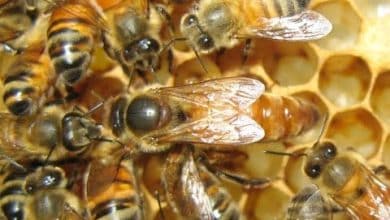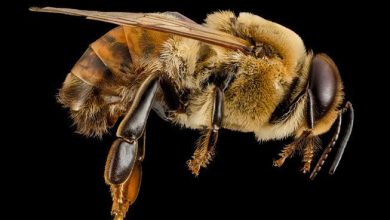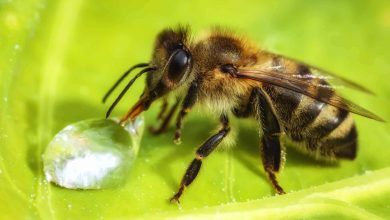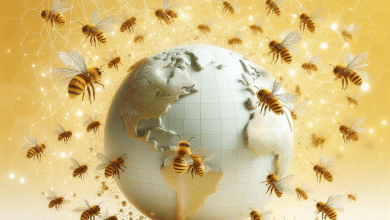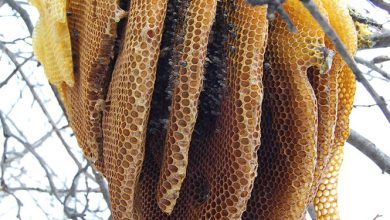The Fascinating World of Honey Bee Hive
Exploring their Structures and Functions
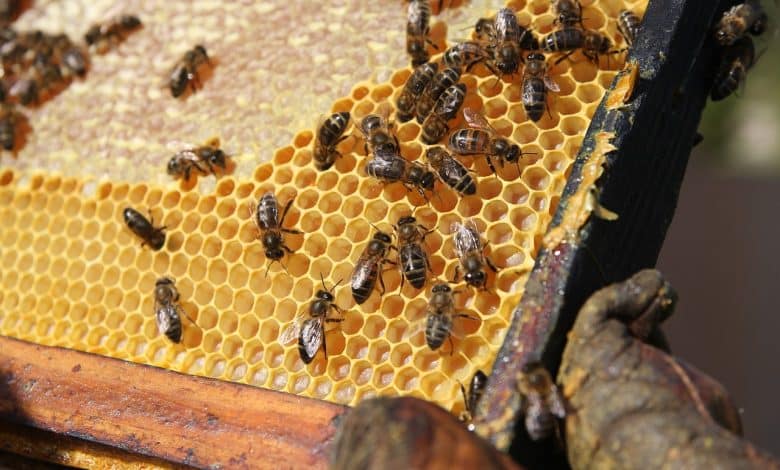
The world of Honey Bee Hive holds a captivating allure for those interested in the intricate workings of nature. These remarkable structures play a crucial role in the ecosystem, supporting the survival of not only bees but also numerous plant species and other pollinators. Understanding the structures and functions of honey bee hives can provide valuable insights into the complex social organization and activities of these buzzing insects.
Honey Bee Hive come in various types, each with its own unique characteristics and purposes. From the external structure composed of wax cells to the internal chambers housing different castes of bees, these hives are marvels of architectural ingenuity.
Within a hive, worker bees assume numerous responsibilities such as nectar and pollen collection, hive defense, and maintaining the overall health and productivity of the colony. The queen bee plays an essential role by laying eggs and ensuring the continuity of the colony’s population.
The activities within a honey bee hive encompass fascinating behaviors like nectar collection and honey production, as well as pollen gathering for food stores and defense against intruders. Communication is integral to hive functioning, with honey bees utilizing intricate dance language to convey information about food sources to their fellow workers.
Organized in hierarchical systems, Honey Bee Hive exhibit remarkable efficiency in performing tasks necessary for their survival. Preserving honey bee populations is more critical than ever due to the vital role they play in pollination and sustaining biodiversity.
Delving into the world of Honey Bee Hive unveils a multitude of wonders that showcase nature’s complexity at its finest. By appreciating their adaptations and supporting their conservation, we can ensure that these incredible creatures continue to thrive within our ecosystems.
The Importance of Honey Bee Hive in the Ecosystem
Honey Bee Hive play a vital role in the ecosystem, supporting the survival and well-being of not just bees, but also numerous plant species and other pollinators. These intricate structures serve as dynamic hubs of activity that facilitate crucial ecological processes.
One of the primary functions of Honey Bee Hive is pollination. Bees collect nectar from flowers while inadvertently transferring pollen grains between plants, enabling cross-pollination and facilitating reproduction. This process is essential for the successful fertilization and production of seeds and fruits in many plant species, contributing to the biodiversity and productivity of ecosystems.
Moreover, Honey Bee Hive contribute to food production by ensuring agricultural crop pollination. They are responsible for pollinating a wide range of crops, including fruits, vegetables, nuts, and oilseeds. Without their diligent work, these crops would experience reduced yields or even failure.
Additionally, Honey Bee Hive provide valuable ecosystem services by promoting plant diversity. Through their foraging activities, bees visit various flowering plants, facilitating their reproduction and dispersing their seeds. This helps maintain healthy vegetation communities and supports habitat stability for other organisms.
Furthermore, Honey Bee Hive act as indicators of environmental health. Their presence and population dynamics can reflect changes in land use practices, pesticide contamination, habitat degradation, and climate patterns. Monitoring honey bee populations can help assess the overall health and balance of ecosystems.
In summary, Honey Bee Hive are integral components of ecosystems due to their essential roles in pollination, food production, plant diversity promotion, and ecosystem health monitoring. Recognizing their significance is crucial for safeguarding both the survival of bees themselves and the overall ecological balance they contribute to.
The Different Types of Honey Bee Hive
Honey Bee Hive come in various types, each with its own unique structure and design. The most common types of Honey Bee Hive include Langstroth hives, Top-bar hives, and Warre hives.
Langstroth hives, named after their inventor Reverend Lorenzo Lorraine Langstroth, are the most widely used type of hive. They consist of boxes stacked vertically, with frames that hold beeswax foundation sheets for the bees to build comb on. This design allows for easy inspection and manipulation of the hive.
Top-bar hives differ from Langstroth hives in their horizontal design. Instead of using framed boxes, they have bars placed across the top that serve as a guide for the bees to build comb. These hives provide a more natural setting for the bees and are popular among beekeepers who prefer a hands-off approach.
Warre hives, developed by Abbé Émile Warré, are similar to top-bar hives but with added stacking boxes. The bees start building comb from the top and move downward as they expand their colony. This type of hive aims to mimic the natural behavior of bees in the wild.
Each type of honey bee hive has its advantages and disadvantages depending on factors such as beekeeper preference, climate, and intended management style. Regardless of the type of hive chosen, it is essential to provide a suitable environment for the bees to thrive and carry out their vital functions in pollination and honey production.
In conclusion, Honey Bee Hive come in different types such as Langstroth, Top-bar, and Warre hives. Each type offers unique features that cater to different beekeeping preferences and management styles. Understanding these different hive options allows beekeepers to choose the best fit for their specific needs while ensuring the well-being and success of their honey bee colonies.
Honey Bee Hive Structures
Honey Bee Hive are remarkable structures that are designed to provide a safe and efficient living environment for the bees. They consist of both external and internal components that work together to support the functioning of the hive.
The external structure of a honey bee hive typically consists of a protective outer covering made from materials such as wood or plastic. This covering helps to insulate the hive, keeping it warm in colder climates and protecting it from adverse weather conditions. The shape and size of the hive can vary depending on the type of hive being used.
Inside the hive, there are several key components that contribute to its overall structure and function. These include frames, comb cells, and storage areas for honey and pollen. Frames provide support for beeswax foundation sheets, which serve as a base for bees to build their comb on. The comb cells are compartments where the bees store brood (eggs, larvae, pupae) and food resources such as honey and pollen.
The internal structure of a honey bee hive is carefully organized to facilitate efficient colony operations. The brood chamber, located in the lower part of the hive, is where the queen lays her eggs and where worker bees raise new generations of bees. Above the brood chamber is often an area dedicated to storing surplus honey, known as supers.
The overall structure of a honey bee hive is designed to promote effective communication between individual bees and ensure optimal use of resources within the colony. Understanding these structures allows beekeepers to provide appropriate care for their hives while maximizing honey production and supporting healthy bee populations.
The External Structure of a Honey Bee Hive
The external structure of a honey bee hive plays a crucial role in protecting the colony and maintaining its optimal functioning. The hive is typically covered with a protective outer layer made from materials such as wood or plastic, which acts as insulation, keeping the hive warm during colder climates and shielding it from adverse weather conditions. This outer covering also helps to regulate the internal temperature of the hive.
The shape and size of the hive can vary depending on the type of hive being used. Some common types include Langstroth hives, top bar hives, and Warre hives. Each type has its own unique design that caters to different beekeeping practices and management styles.
The entrance to the hive is another important feature of its external structure. It serves as the main point of entry for bees, allowing them to come and go for foraging activities. The entrance may be equipped with a landing board or porch to provide a convenient area for bees to land before entering the hive.
In addition, some hives may have additional features such as observation windows or ventilation systems that enhance beekeeper’s ability to monitor the colony’s activity and maintain proper airflow within the hive.
Overall, the external structure of a honey bee hive provides vital protection and support for honey bees, allowing them to thrive and carry out their essential tasks within the colony. It is important for beekeepers to maintain and regularly inspect this external structure to ensure the continued health and productivity of their honey bee colonies.
The Internal Structure of a Honey Bee Hive
The internal structure of a honey bee hive is a highly organized and efficient system that allows the colony to thrive. Within the hive, bees construct a series of vertically hanging wax combs. These combs consist of hexagonal cells, known as honeycomb cells, which serve multiple functions within the hive.
The central role of the honeycomb cells is to provide storage space for essential resources such as nectar, pollen, and honey. Bees use these cells to store food for the colony’s survival during times of scarcity. The cells also serve as nurseries for the growth and development of bee larvae.
Each honeycomb cell is meticulously crafted by worker bees using their specialized wax glands. This intricate construction not only maximizes space utilization but also ensures stability and strength. The uniform hexagonal shape of the cells minimizes wasted space and allows for efficient storage.
Moreover, within these honeycombs, there are specific areas designated for different purposes. For example, there are brood cells where eggs are laid by the queen bee and larvae are developed. Additionally, there are storage cells for storing surplus food supplies.
The internal structure of a honey bee hive also includes pathways and corridors that facilitate movement and communication among the colony members. These pathways provide access to different areas of the hive, allowing bees to perform their tasks efficiently.
Overall, the internal structure of a honey bee hive is a marvel of engineering precision and functionality. It enables effective organization, resource storage, reproduction, and communication within the colony – all crucial elements for its survival and success.
Functions of Honey Bee Hive Components
The honey bee hive is a complex system consisting of various components that perform specific functions essential for the colony’s survival and success. Each component plays a crucial role in maintaining the overall health and productivity of the hive.
One of the key components is the worker bees. These industrious bees are responsible for tasks such as foraging, collecting nectar and pollen, building and repairing honeycombs, nursing larvae, and protecting the hive from intruders. They work tirelessly to ensure a constant supply of food and a secure environment for the colony.
The queen bee is another important component of the hive. Her primary function is reproduction. She lays eggs, which give rise to new generations of bees. The queen also emits pheromones that regulate the behavior and development of other bees in the colony. Without a healthy queen, the hive cannot thrive.
The drones, or male bees, have one main purpose – mating with virgin queens from other colonies. Their presence ensures genetic diversity within the population. However, once they have fulfilled their role, drones are often expelled from the hive during periods of resource scarcity.
Another vital component is the honeycomb cells. These hexagonal structures serve as storage units for food resources such as nectar, pollen, and honey. The cells also provide protection and nursery space for developing bee larvae.
By working together and fulfilling their specific functions within the hive, these components ensure not only their own survival but also the prosperity of the entire honey bee colony.
The Role of Worker Bees in the Hive
Worker bees are the backbone of the honey bee hive, tirelessly performing a range of tasks to ensure the survival and success of the colony. These industrious female bees undertake a variety of essential roles to fulfill the needs of the hive.
One of their primary responsibilities is foraging for food. Worker bees venture out into fields and gardens in search of nectar and pollen from flowers. They skillfully collect these valuable resources using their long proboscis and bristled legs, ensuring a constant supply for the colony.
Back at the hive, worker bees channel their energy into converting collected nectar into honey. Through a process called regurgitation, they digest and deposit the nectar into hexagonal cells within honeycomb structures. These cells serve as storage units for future consumption during periods of scarcity or winter hibernation.
Worker bees are also responsible for building and repairing honeycomb structures. They meticulously construct each cell using beeswax secreted from glands on their abdomen. This comb not only provides storage but also acts as a space for larvae to develop.
In addition to these duties, worker bees care for the young brood by nursing and feeding them royal jelly, a nutrient-rich secretion produced by their own bodies. They also regulate temperature control within the hive by fanning their wings to circulate air or clustering together to generate heat when necessary.
Furthermore, worker bees play a vital role in protecting the hive from intruders. They guard the entrance, vetting incoming visitors by sensing chemical signals and using physical force against potential threats.
The diligent efforts of worker bees contribute to maintaining the overall health and productivity of the hive. Without these dedicated females, honey bee colonies would not thrive or prosper.
The Queen Bee and Her Unique Functions
The Queen Bee is a vital component of the honey bee hive, playing unique and essential roles in the colony’s survival and success. Unlike the worker bees, the Queen Bee is larger in size and has distinct physical features that set her apart.
Her primary function is reproductive, as she lays all the eggs in the hive – up to 2,000 per day! Fertilized eggs become worker bees or new queens, while unfertilized eggs develop into drones. The Queen Bee produces pheromones that help maintain harmony and cohesion within the hive. These pheromones serve as a communication tool for the bees, conveying vital information such as queen’s presence and health.
Another significant function of the Queen Bee is mating with drones from other colonies during her nuptial flight. This cross-mating ensures genetic diversity in future generations, contributing to overall hive health and adaptability.
Interestingly, when a colony senses that their current queen is aging or unhealthy, they initiate a process known as “supersedure.” During this process, worker bees create special queen cells where a new queen is raised. Once emerged, these young queens fight each other until only one remains dominant to take over the hive.
The presence of a healthy and fertile queen bee ensures stability and productivity within the hive. Without her guidance and reproductive capabilities, honey bee colonies would cease to exist. Therefore, preserving and protecting these magnificent creatures is crucial for maintaining ecological balance and agricultural sustainability.
Honey Bee Hive Activities
Honey Bee Hive buzz with a variety of activities as the industrious bees work together to ensure the survival and success of their colony. These activities can be divided into two main categories: nectar collection and honey production, and pollen collection and hive defense.
One of the primary activities of honey bees is the collection of nectar from flowers. Worker bees venture out in search of nectar-rich blossoms, using their long tongues to extract the sweet liquid. They then store the collected nectar in their honey stomachs before returning to the hive. Back at the hive, worker bees transfer the nectar to other bees through a process called trophallaxis. The enzyme-rich saliva helps break down complex sugars into simpler forms, eventually resulting in honey.
In addition to gathering nectar, honey bees also collect pollen. As they visit flowers, tiny grains of pollen adhere to their bodies. Worker bees use specialized bristles on their legs called pollen baskets to carry these pollen pellets back to the hive. Pollen serves as an important protein source for developing brood within the hive.
Moreover, honey bee colonies engage in hive defense against potential threats like predators or intruders. Guard bees stationed at the entrance monitor incoming traffic and ward off any unauthorized entry. In case of danger, worker bees can also release alarm pheromones that prompt other bees to respond aggressively and protect their home.
Overall, honey bee hive activities are precisely coordinated and serve essential roles in maintaining the health and functionality of the colony. By diligently collecting nectar, producing honey and storing pollen,Honey Bee Hive ensure a stable food supply for themselves while contributing to pollination efforts in ecosystems worldwide.
Nectar Collection and Honey Production
In the intricate world of Honey Bee Hive, one of the crucial activities is nectar collection and honey production. The industrious worker bees undertake this task with remarkable precision and efficiency.
Worker bees venture out of the hive in search of nectar-rich flowers. With their long tongues, they extract sweet nectar from blossoms and store it in their honey stomachs. Once their stomachs are full, they return to the hive to share their bounty.
Back at the hive, the collected nectar goes through a transformative process. Worker bees engage in trophallaxis, where they pass the nectar from bee to bee, adding enzymes that break down complex sugars into simpler forms. This process leads to the creation of honey.
The workers then deposit the processed nectar into wax cells inside the hive known as honeycombs. Here, water evaporates from the nectar due to the heat generated by surrounding bees’ wing-fanning efforts. Gradually, the moisture content decreases until it reaches around 18-20%, resulting in thick and sticky honey.
Honey plays a vital role within the hive. It serves as a primary food source during times when flower availability is scarce or during winter months when foraging opportunities are limited. Additionally, it provides nourishment for developing brood and helps maintain their health.
The golden liquid produced through nectar collection and honey production represents not only a survival strategy for honey bee colonies but also a valuable gift from nature that humans have cherished for centuries. Its delectable taste and numerous medicinal properties make it a beloved staple in kitchens worldwide
Pollen Collection and Hive Defense
Pollen collection is another essential activity undertaken by honey bees in their hives. Pollen serves as a vital source of protein and other nutrients for the colony. Worker bees venture out to flowers and use their specialized body structures, such as pollen baskets on their hind legs, to collect pollen grains. These grains are then transported back to the hive.
Once inside the hive, worker bees deposit the pollen into comb cells located near the brood area. They mix the pollen with nectar and enzymes, creating a nutritious substance called bee bread. This bee bread is fed to developing larvae, ensuring their healthy growth.
In addition to collecting pollen, Honey Bee Hive also have an efficient defense mechanism to protect their colony. Guard bees stationed at the entrance of the hive monitor incoming insects and intruders. They identify potential threats and take action to defend the hive.
When threatened, honey bees collectively swarm around the intruder, buzzing loudly, and may even sting to protect their home. These defensive actions help ensure the safety and survival of the entire colony.
The ability of honey bees to collect pollen and defend their hives is an integral part of maintaining a healthy ecosystem. Pollination by bees contributes significantly to plant reproduction and biodiversity. Protecting honey bee populations is crucial not only for our food supply but also for preserving the delicate balance of nature.
Communication and Organization within the Hive
Within the intricate honey bee hive, communication and organization play crucial roles in maintaining the colony’s smooth operation. Honey bees have developed a sophisticated dance language to convey essential information to their fellow workers. Through a series of precise movements and patterns, known as the waggle dance, foragers communicate the location of rich nectar sources and pollen-rich flowers.
The waggle dance is performed on a vertical comb surface, with each movement representing specific directions and distances relative to the position of the sun. By analyzing the duration, angle, and intensity of these dances, other worker bees can accurately navigate to the food source.
In addition to communication, Honey Bee Hive exhibit a hierarchical organization that ensures efficient division of labor. The division of tasks within the colony is determined by age and physiological development. Young worker bees typically start their adult lives by performing duties inside the hive, such as cleaning cells or caring for larvae. As they mature, they move on to tasks outside the hive, including foraging for nectar and pollen.
This organized system allows for optimal utilization of available resources while ensuring that all necessary hive functions are carried out effectively. It promotes productivity and maximizes hive efficiency by allowing specialization among worker bees based on their abilities and experience.
The ability of honey bees to communicate effectively and organize their activities is truly remarkable. This intricate network within the hive enables them to adapt quickly to changing circumstances and maintain the well-being of their entire colony.
Overall, understanding the communication and organization within honey bee hives provides invaluable insights into these fascinating creatures’ social structure and reinforces their crucial role in maintaining ecosystem balance.
The Fascinating Dance Language of Honey Bees
Communication is essential for any society, and honey bees have developed a truly remarkable way of conveying information within their hive. Through their dance language, honey bees are able to communicate the location of rich nectar sources and pollen-rich flowers to their fellow workers.
This dance language, also known as the waggle dance, is performed by foraging worker bees on a vertical comb surface inside the hive. The waggle dance consists of a series of precise movements and patterns that convey specific directions and distances relative to the position of the sun.
During the waggle dance, a forager bee waggles its abdomen while rapidly moving in a zigzag pattern. The duration, angle, and intensity of these movements provide valuable information to other worker bees. By analyzing these cues, they can accurately discern the location of the food source.
Interestingly, the distance communicated through the waggle dance is directly proportional to the duration of the waggle phase. A longer waggle indicates a greater distance from the hive. The angle at which the bee performs the waggle dance in relation to gravity represents the direction of the food source with respect to the sun.
This intricate dance language allows honey bees to communicate effectively about distant food sources without physically transporting them. It enables them to adapt quickly to changing circumstances and utilize resources efficiently as they navigate their surroundings. Truly fascinating!
Understanding this incredible communication method sheds light on honey bees’ social structure and reinforces their role as vital pollinators in maintaining ecosystem balance. The dance language is one of nature’s astonishing wonders that showcases the intelligence and complexity found within honey bee hives.
The Hierarchical Organization of Honey Bee Hives
The hierarchical organization within Honey Bee Hive is a fascinating aspect of their social structure. Each hive functions as a complex society, with distinct roles and responsibilities assigned to different individuals based on their age and physiological development.
At the top of the hierarchy is the queen bee, who serves as the reproductive powerhouse of the colony. Her primary role is to lay eggs, ensuring the survival and growth of the hive. The queen bee is fed and cared for by a dedicated group of worker bees known as attendant bees.
Beneath the queen are the worker bees, which make up the majority of the hive population. Worker bees perform various tasks such as nursing larvae, collecting nectar and pollen, building comb, and defending the hive. Within the worker bee population, there are further subdivisions based on age and responsibilities. Younger workers handle tasks inside the hive while older workers venture outside for foraging activities.
Lastly, there are drones – male bees whose sole purpose is to mate with virgin queens from other colonies. Drones do not possess stingers and do not participate in any hive maintenance or food collection activities.
This hierarchical organization ensures efficient division of labor within the honey bee colony. Each individual has a specific role that contributes to the overall functioning and survival of the hive. The coordination between different castes allows for effective utilization of resources and collective decision-making processes.
Understanding the hierarchical organization within honey bee hives gives us insights into how these remarkable creatures work together to create complex societies that thrive in harmony with their environment.
Conclusion
In conclusion, honey bee hives are extraordinary structures that play a crucial role in the ecosystem. Their efficient organization and complex functions contribute to the survival and growth of bee colonies. Understanding their structures and functions not only provides insights into the fascinating world of honey bees but also highlights the importance of preserving their populations.
The external and internal structures of honey bee hives provide a safe and organized environment for bees to live and work. Each component has a specific purpose, from comb construction to brood rearing and storage of resources like honey and pollen. The hive serves as a thriving hub where worker bees tirelessly perform their tasks to support the survival of the colony.
The queen bee, with her unique functions of egg-laying and maintaining social harmony within the hive, holds a vital position in the hierarchy. The coordination between different castes ensures efficient division of labor, resource utilization, and collective decision-making processes.
Honey Bee Hive activities such as nectar collection, honey production, pollen collection, and hive defense further demonstrate the intricate mechanisms at play within these small societies. The communication methods, including dance language, facilitate effective information exchange among group members.
The remarkable adaptations and efficiency displayed by honey bee hives are awe-inspiring. However, it is crucial to recognize the challenges faced by honey bees due to factors like habitat loss, pesticides, climate change, and diseases. Preserving honey bee populations is essential for maintaining biodiversity and ensuring the pollination of many plant species that support our ecosystems.
In summary, studying honey bee hives not only allows us to appreciate their remarkable abilities but also emphasizes the need for conservation efforts to protect these invaluable insects and their important role in our natural world.
The Remarkable Adaptations and Efficiency of Honey Bee Hives
Honey bee hives showcase remarkable adaptations and efficiency that contribute to their success as highly organized societies. These adaptations are key to the survival and growth of honey bee colonies.
One remarkable adaptation is the construction of hexagonal beeswax comb cells. The shape maximizes storage space while minimizing material usage, creating an efficient storage solution for honey, pollen, and brood. This precise architecture allows bees to store large quantities of resources in a compact manner.
Another fascinating adaptation is the ability of worker bees to perform various tasks based on age. Young worker bees care for the brood, while older workers take on roles such as nectar collection, hive maintenance, and defense. This division of labor ensures efficient resource utilization and promotes colony productivity.
The communication methods employed by honey bees are also impressive. Through intricate dance language, bees convey valuable information about food sources to their fellow workers. This mechanism enables efficient foraging and resource allocation within the hive.
Efficiency is further demonstrated through coordinated decision-making processes in the hive. Bees collectively evaluate potential new nest sites before making a consensus-based decision on relocation. This collaboration ensures optimal conditions for colony survival.
Overall, honey bee hives exemplify nature’s efficiency at its finest. Their remarkable adaptations, including comb construction, task specialization, communication methods, and collective decision-making processes, contribute to their overall success as social insects. Understanding and appreciating these adaptations highlight the importance of preserving honey bee populations and protecting these valuable pollinators in our ecosystem.
The Importance of Preserving Honey Bee Populations
Preserving honey bee populations is crucial for maintaining the balance and health of ecosystems worldwide. Honey bees play a vital role in pollinating a wide variety of flowering plants, including many fruits, vegetables, and nuts that comprise a significant portion of our diets. Without honey bees, the availability and diversity of these crops would be severely impacted, leading to potential food shortages and increased prices.
In addition to their contribution to agriculture and food production, honey bees also contribute to biodiversity by helping to pollinate wildflowers and other important plant species. By facilitating cross-pollination, honey bees enable the reproduction of countless plant species, which ultimately supports the entire ecosystem’s stability and resilience.
Honey bee populations are currently facing numerous challenges, including habitat loss, pesticide exposure, climate change effects, and diseases. These factors have led to declines in honey bee colonies worldwide. The loss of honey bee populations has far-reaching implications for both human livelihoods and the overall health of ecosystems.
To preserve honey bee populations, it is essential to take measures such as conserving natural habitats, reducing the use of harmful pesticides, promoting sustainable agricultural practices that support pollinators, and raising awareness about the importance of bees among individuals and communities.
By safeguarding honey bee populations today, we can ensure the continued pollination services they provide for future generations while preserving the delicate balance of our ecosystems. Taking action now is crucial in protecting this remarkable insect species and securing our own well-being in the face of global environmental challenges.
And there you have it, a glimpse into the intricate and industrious life within the Honey Bee Hive. These tiny yet mighty creatures play a pivotal role in our ecosystem through their relentless work in pollination and honey production. Their complex social structure and sheer number of species highlight just how incredible bees truly are. Thanks for joining us on this exploration of The Fascinating World of Honey Bee Hive. It’s our hope that with every article, we contribute to a greater appreciation and understanding of these essential insects. Now, it’s your turn to buzz in. What aspect of bee behavior or hive life intrigues you the most? Share your thoughts and continue the conversation. Together, let’s keep learning and advocating for the tireless Honey Bee Hive makers of our world.



